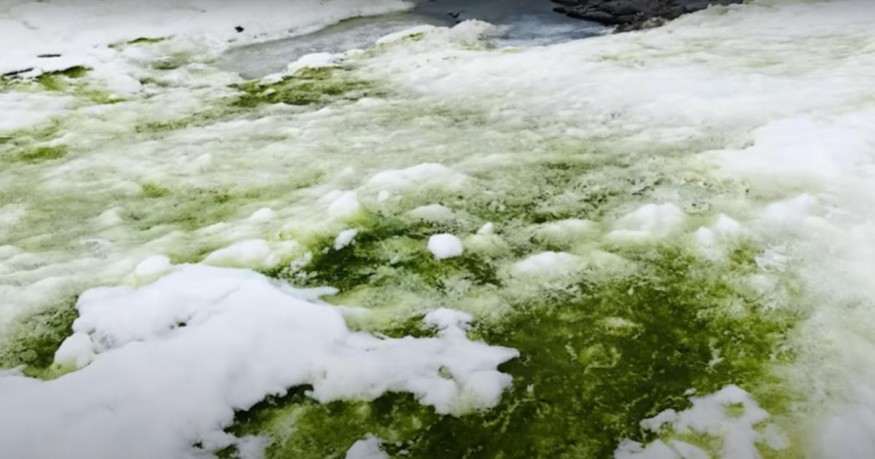Katie Maloney, a geobiology graduate student, set out to discover microscopic fossils of early life in the mountains of Canada's isolated Yukon territory.

Even with meticulous field planning, the chances of discovering the same rocks were slim. She didn't leave empty-handed. However, she returned with some of the most important fossils from the time period.
Algae and Oxygen Production

Over two billion years ago, eukaryotic life (cells with a DNA-containing nucleus) arose, with photosynthetic algae dominating the field for hundreds of millions of years as oxygen accumulated in the Earth's atmosphere. Algae are thought to have originated first in freshwater ecosystems on land, then moved to the seas, according to geobiologists. However, since the fossil record from early Earth is incomplete, the exact date of the evolutionary process is unknown.
Maloney's observations were published in the journal Geology. Her team discovered macroscopic fossils of various algae species that coexisted on the seafloor around 950 million years ago, nestled between bacterial mounds in a shallow ocean. The discovery bridges the evolutionary divide between algae and more complex life, putting time limits on eukaryotic evolution.
Lucky Discovery
Despite the fact that Maloney's field team chief, sedimentologist Galen Halverson, had deliberately selected the field site and had worked in the area for years, the finding was an unlikely stroke of luck.
"Maybe we'll find some microfossils," Maloney speculated. She hadn't mentioned the likelihood of discovering bigger fossils. "So when we began finding well-preserved bones, we put everything on hold and assembled the whole team to collect more fossils. Then we began to come across large, intricate slabs containing hundreds of specimens. That was really thrilling!"
In paleobiology, determining whether traces like the ones Maloney discovered are biogenic (formed by living organisms) is a required step. Although the final decision is taken in the lab, a couple aspects gave her a heads up in the area. There were visible patterns within the traces, which can be a positive predictor of survival. Her decision was made easier by the fact that there were hundreds of them tangled together.
Related Article : Study Showed How The Human Brain Grew After Large Animals Went Extinct
Unnoticed Fossil
The fossils must have gone unnoticed by most people that day.
Marc Laflamme, Maloney's assistant, said, "We were really fortunate that Katie was there to find them because they don't really look like anything at first sight." "Katie is used to staring at unusual fossils, so she has a knack for seeing them and thinking, 'This is something worth looking at.'"
The heavy slabs were wrestled into their helicopter by Maloney and her colleagues in the field for secure transport back to the University of Toronto-Mississauga lab. Microscopy and geochemical techniques were used by her, Laflamme, and their colleagues to prove that the fossils were early eukaryotes. They then meticulously mapped the specimens' cellular characteristics, enabling them to distinguish between different organisms in the group.
Maloney and her coauthors were assured that they had discovered the first macroscopic specimens from this crucial time frame while they were writing up their findings. However, during the peer review process, they learned from a colleague that another group in China had made a similar discovery simultaneously-macrofossils from the same epoch. This did not deter them.
"What's a couple hundred million years between friends?" says one of the characters. Laflamme burst out laughing. "Our fossils, I believe, have more detail, making them easier to understand... They're stunning. They're massive, intricately detailed, and contain anatomy. Your gaze is naturally attracted to them."
Eukaryotic Evolution

Finally, having two macrofossils collections from about the same time period will only boost the history of eukaryotic evolution by acting as important reference points for DNA-based biologic dating techniques. The latest fossils also hold back the period that algae lived in aquatic habitats, implying that evolution had already taken place in land-based lakes. According to Maloney, a sedimentologist, they also raise concerns about what gets stored in the rock record and why.
"Algae were significant early on due to their role in oxygenation and biogeochemical cycles," Maloney said. "So, why is it that they take so long to appear in the fossil record? It's certainly getting us thinking about animal populations and whether we're getting the full picture or whether we're losing out on a lot due to a lack of sustainability."
Hoping for Further Discoveries
Maloney, who switched from more recent biota to algae, found the whole experiment fascinating. "I had no idea algae could fascinate me," she said. "But I was happily shocked when I began researching modern algae and discovered what a critical part they play in biodiversity and climate change-all of the major problems that we face today. As a result, it's been incredible to play a part in the evolution of algae."
For more prehistoric news, don't forget to follow Nature World News!
© 2026 NatureWorldNews.com All rights reserved. Do not reproduce without permission.





